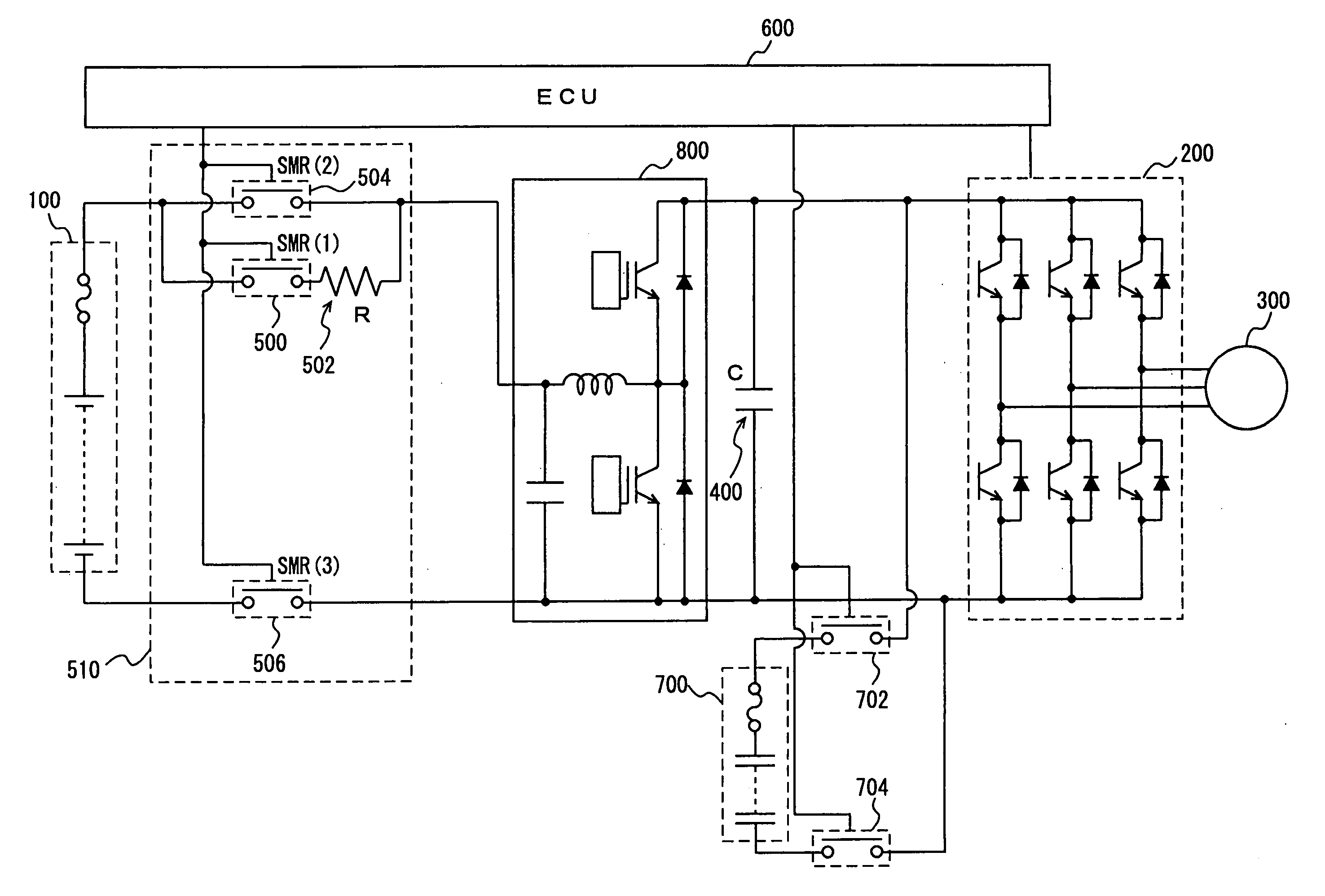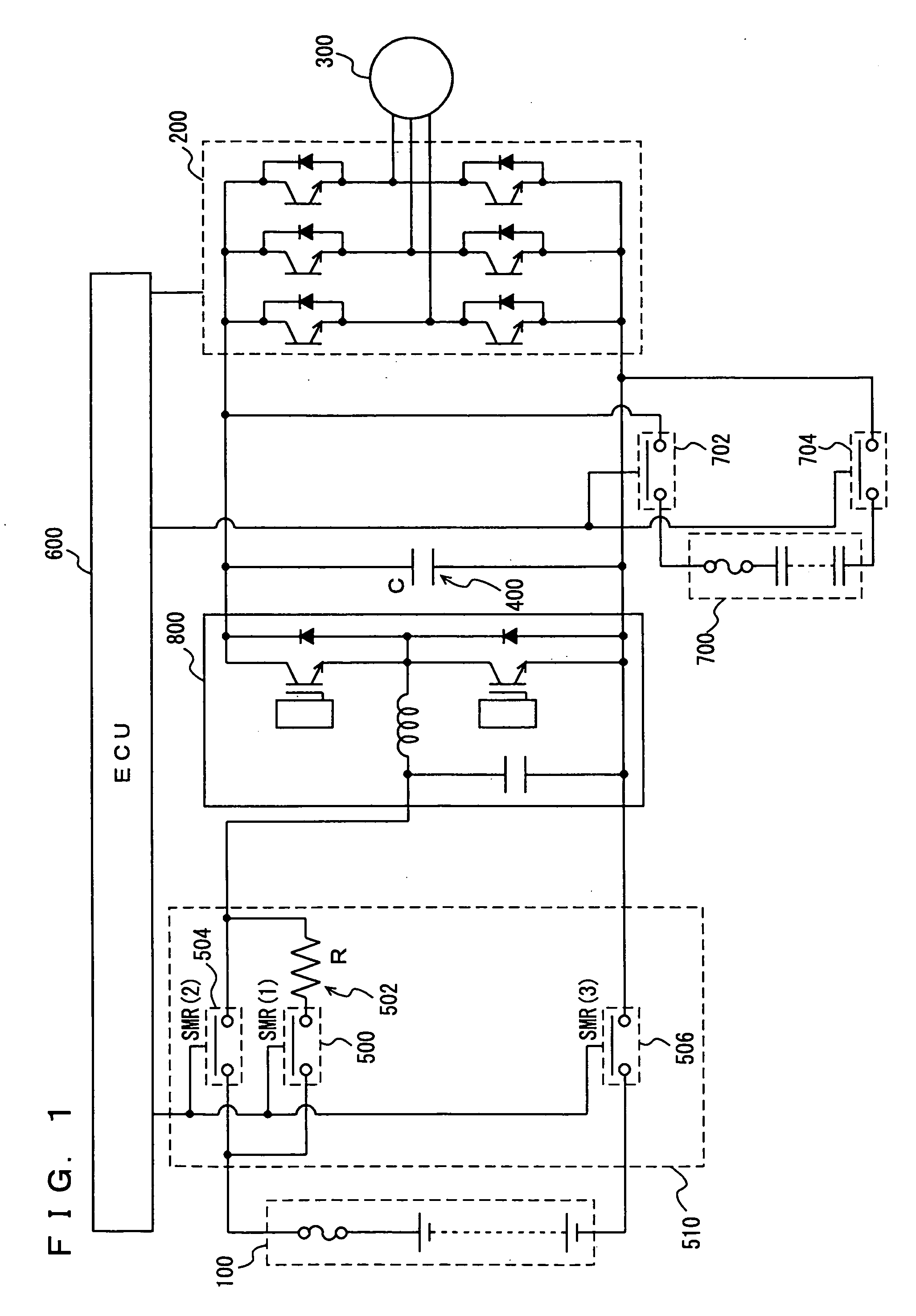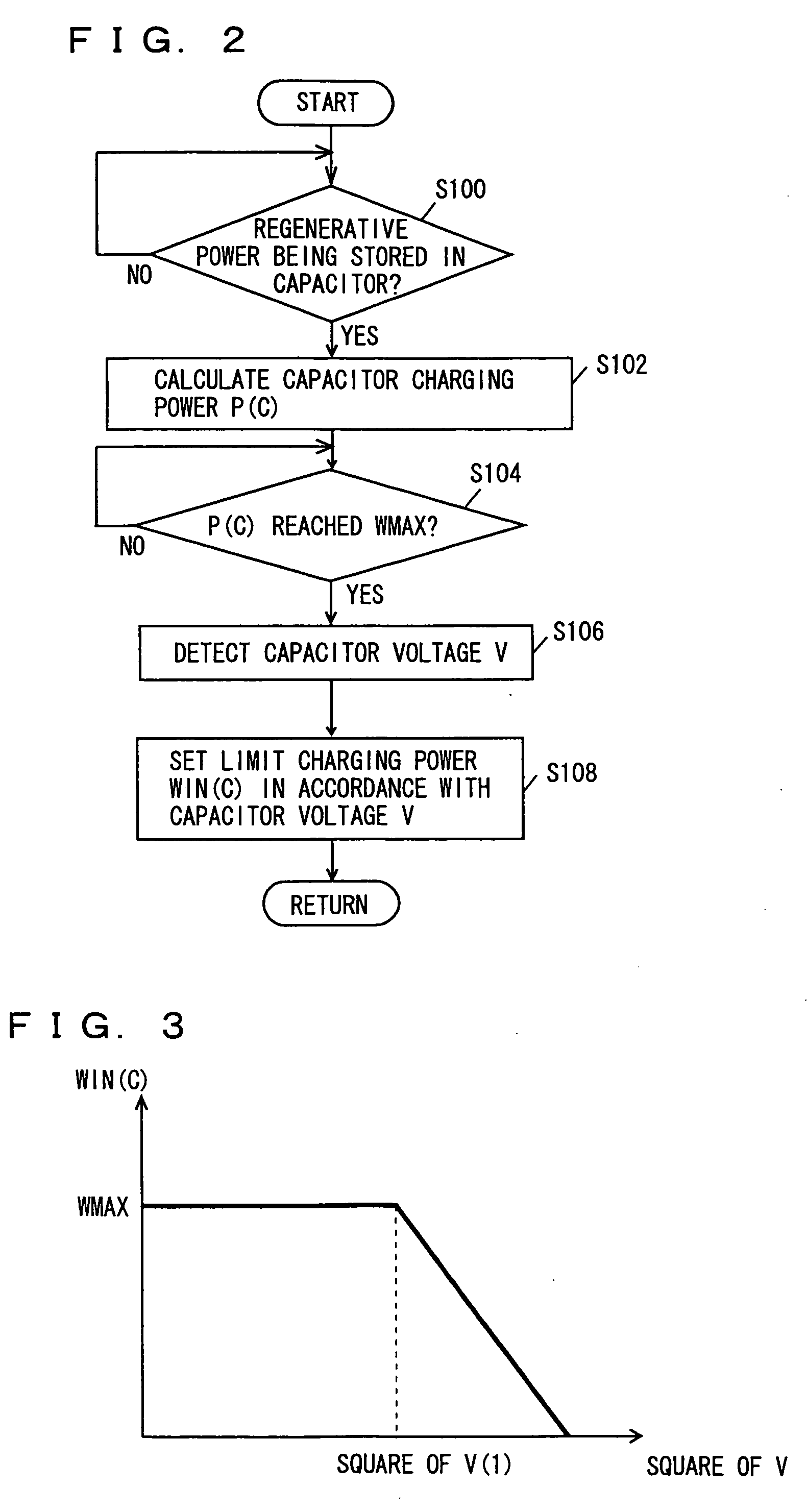Vehicle power controller
a technology for power controllers and vehicles, applied in the direction of motor/generator/converter stoppers, dynamo-electric converter control, capacitor propulsion, etc., can solve the problems of changing braking feeling, and achieve the reduction of regenerative braking force, increasing charging power to secondary batteries, and reducing regenerative braking force
- Summary
- Abstract
- Description
- Claims
- Application Information
AI Technical Summary
Benefits of technology
Problems solved by technology
Method used
Image
Examples
Embodiment Construction
[0023]In the following, an embodiment of the present invention will be described with reference to the figures. In the following description, the same or corresponding portions are denoted by the same reference characters. Their names and functions are also the same. Therefore, detailed description thereof will not be repeated.
[0024]Referring to FIG. 1, the vehicle mounting the power controller in accordance with the embodiment of the present invention will be described. The vehicle includes: a battery 100; an inverter 200; a motor generator 300; a condenser 400; a system main relay 510 (SMR (1) 500, limiting resistor 502, SMR(2) 504, SMR(3) 506); and an ECU (Electronic Control Unit) 600. The power controller in accordance with the present embodiment is controlled by a program executed by ECU 600. In the present embodiment, the vehicle will be described as an electric vehicle that runs only by the driving force from motor generator 300. The vehicle on which power controller of the p...
PUM
 Login to View More
Login to View More Abstract
Description
Claims
Application Information
 Login to View More
Login to View More - R&D
- Intellectual Property
- Life Sciences
- Materials
- Tech Scout
- Unparalleled Data Quality
- Higher Quality Content
- 60% Fewer Hallucinations
Browse by: Latest US Patents, China's latest patents, Technical Efficacy Thesaurus, Application Domain, Technology Topic, Popular Technical Reports.
© 2025 PatSnap. All rights reserved.Legal|Privacy policy|Modern Slavery Act Transparency Statement|Sitemap|About US| Contact US: help@patsnap.com



